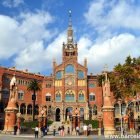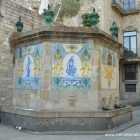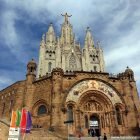The church of Sant Pau del Camp (English: Saint Paul of the fields) is the oldest Christian church in Barcelona and was built between 897 AD and 910 AD. It is also one of the best examples of Romanesque architecture to be found in the city.
Located in the multicultural Raval neighbourhood and off the main tourist path, the churches’ cloisters and vaulted nave exude peace and tranquillity and offer respite from the hustle and bustle of the city.
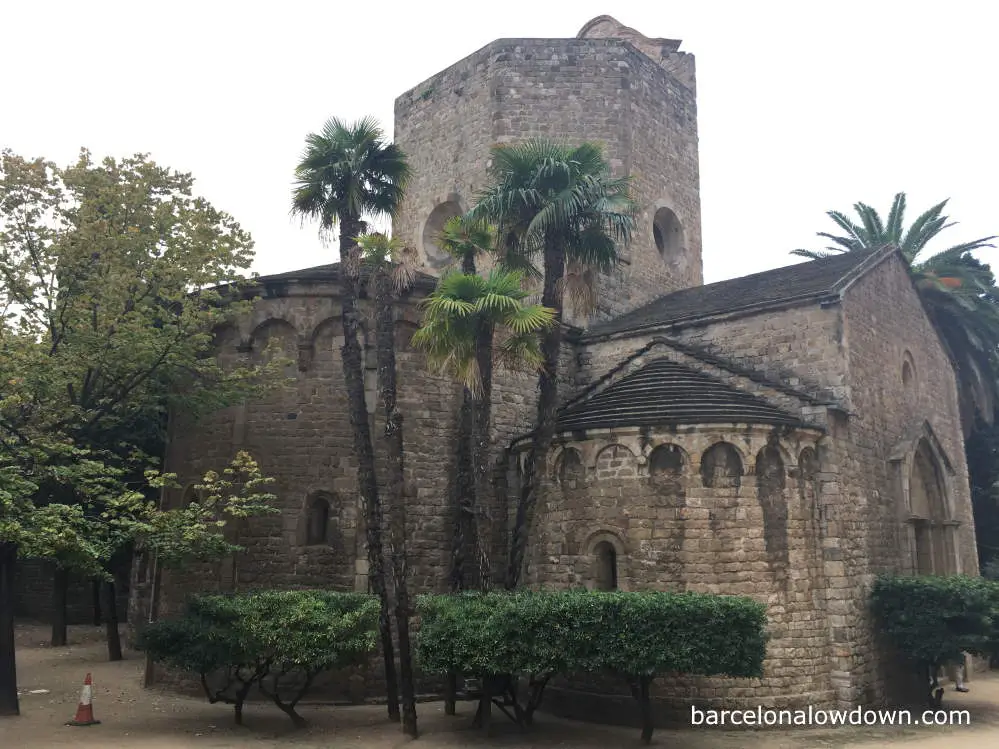
History of Sant Pau del Camp
The church of Sant Pau del Camp was built by Count Wilfred II of Barcelona on the site of a fifth-century Roman hospice in an area of farmland known as El Camp, located between the city and the nearby mountain of Montjuïc.
Originally a Benedictine monastery, the monks who lived in the abbey would have spent their days praying, tending the sick and working in the surrounding fields. The location outside the city may have been ideal for religious devotion and prayer, but it also left the monastery vulnerable to attack.
For much of the ninth and tenth centuries, Barcelona was on the front line between the Muslim kingdom of Al Andalus and the Christian territories of the north. From 978 to 985, the city suffered a series of attacks and was besieged and finally overthrown by the Caliphate of Cordoba. During the siege, the Monastery of Sant Pau del Camp was abandoned and finally destroyed.
More than a century later, in 1096, the monastery was rebuilt before being attacked again in 1114. Three years later, Geribert Guitard and his wife Rotlendis rebuilt and extended the monastery and attached it to the Monastery of Sant Cugat del Vallès under the protection of The Holy See.
The building which we can see today dates from this period and is classed as Romanesque, although there are a few Gothic features which were added later.
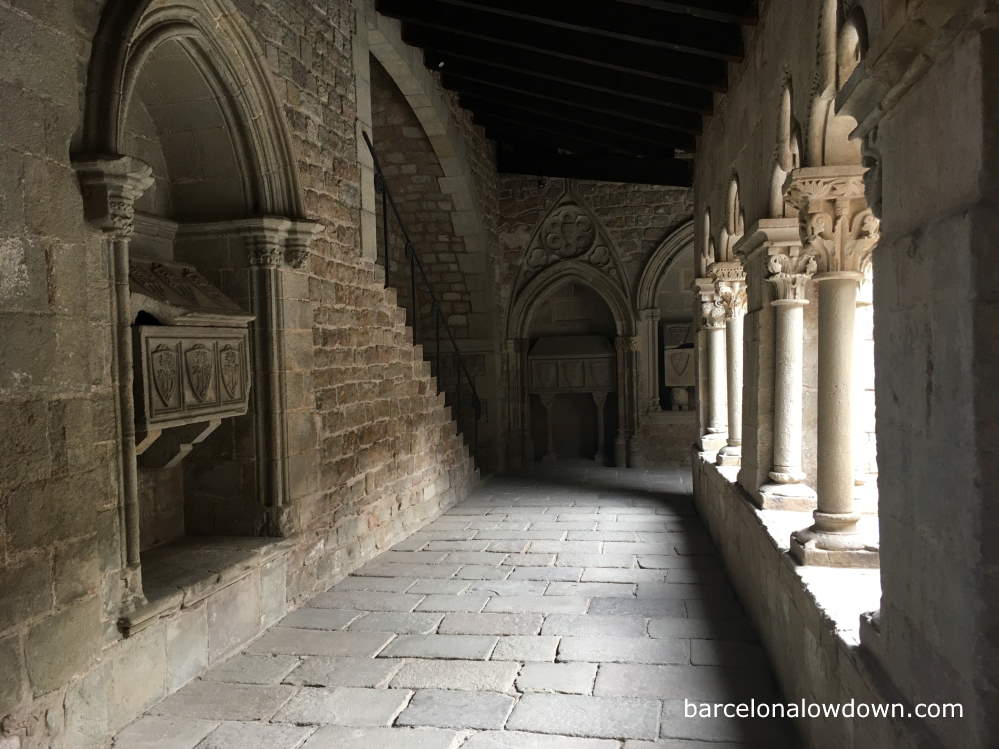
During the fourteenth century, Barcelona’s city walls were extended to include the Raval neighbourhood, stretching as far as what is now Avinguda Paral·lel. Sant Pau del Camp was no longer in the fields, but life didn’t get any easier for the monks.
During the Peninsula War, Barcelona was occupied by Napoleon’s army and turned into a military stronghold. The church of Sant Pau del Camp was used as a hospital.
Then, in 1835, the monks were forced to abandon the monastery during the Ecclesiastical Confiscations of Mendizábal, when abbeys and convents across Spain were expropriated and sold off by the state.
After it was seized, the building was used first as a school and then as an army barracks before finally being declared a national monument in 1879. Today, the church has been restored and converted into a museum which is open to the public.
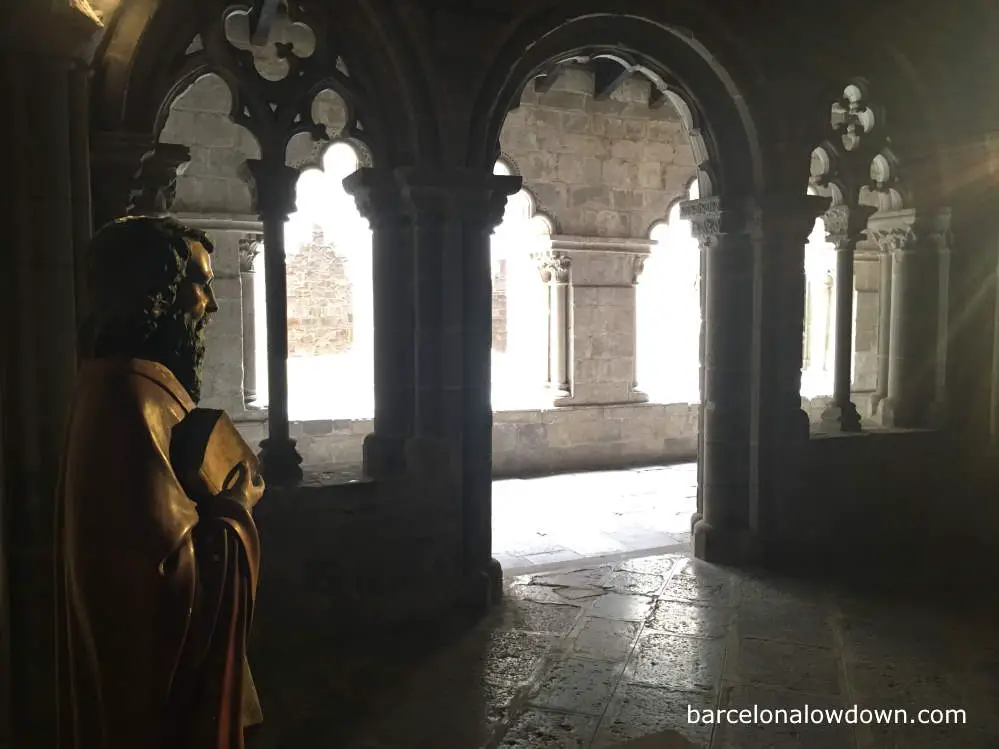
Visiting the church and cloisters
The Church of Sant Pau del Camp stands in a small park near the Rambla del Raval and is surrounded by a wrought iron fence.
Before entering the church, it’s worth spending a few minutes admiring the building’s simple exterior and rounded apses, which are characteristic of Romanesque churches. Behind the church, there’s a small area of allotments, a reminder perhaps of the fact that this used to be an area of arable land.
As you walk around the outside of the monastery, you may be surprised at how small it is. In its heyday, the abbey would have housed an abbot and eight monks, and by the nineteenth century, this had dwindled to just three.
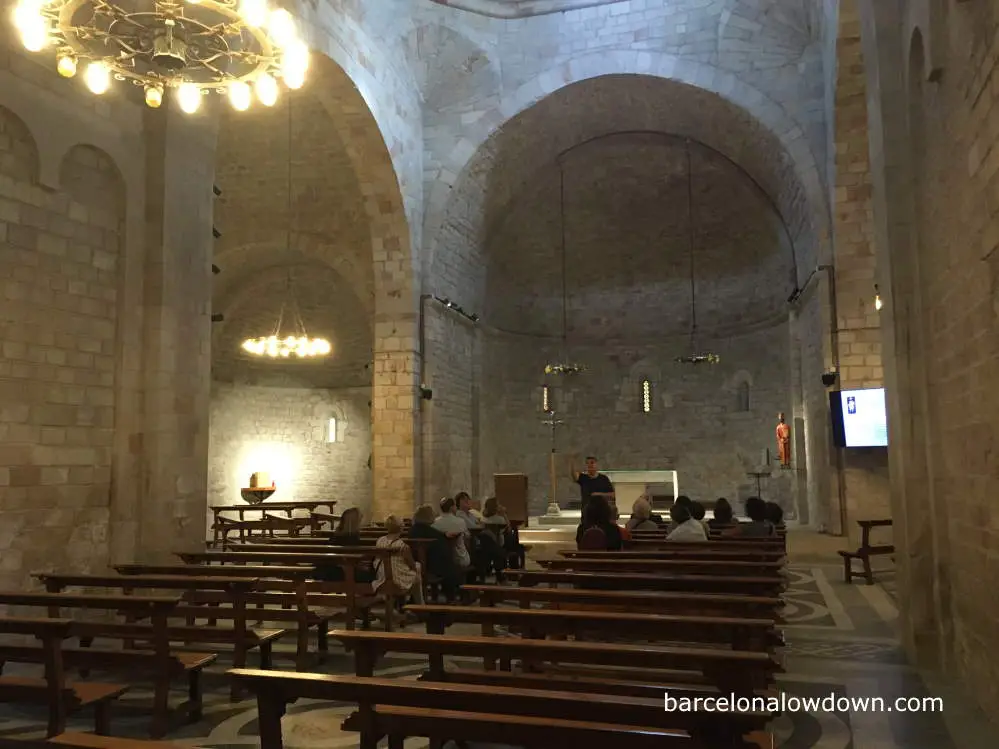
The church is laid out in the form of a Greek cross, with a nave, a transept and three domed apses. The impressive main entrance portal features a series of arches with carvings of animals, including an eagle, an ox and a lion.
The main doors are only open when church services are underway, and entrance to the museum is through a smaller side door which leads to the cloisters and the abbot’s house, which dates back to the fourteenth century.
After purchasing a ticket (also available online), you enter the shady thirteenth-century cloisters, which, due to their state of conservation, are considered to be one of the best examples of Romanesque cloisters in Europe. The capitols of the forty-eight stone columns are decorated with motifs representing leaves, angels and a mix of real and mythical animals. The walls of the cloisters house a series of Gothic-style tombs belonging to the family of the Counts of Bell-Lloch.
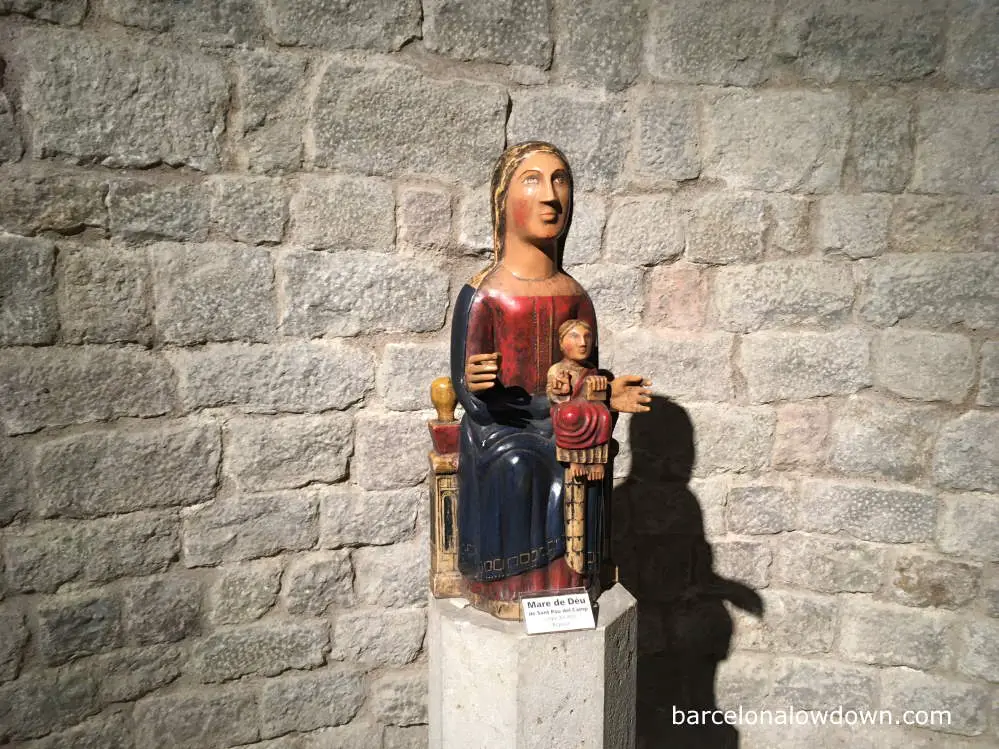
From here, we enter the church, with its simple barrel-roofed nave and apses. Originally the church would have been decorated with frescoes similar to the ones on display in the MNAC museum on Montjuïc. Unfortunately, in 1909 the church, along with many others in Barcelona, was burned by anarchists protesting against conscription to fight in the Second Rif War. The plus side is that the lack of decoration allows you to appreciate the simple beauty of the architecture better.
Opening times and Prices:
October to June
Mon to Fri from 10:00 to 13:00
Saturdays and public holidays from 10:00 to 13:00 and 15:00 to 18:00
July to September
Mon to Fri from 10:00 to 13:30 and 15:00 to 18:00
Saturdays and public holidays from 10:00 to 13:00 and 15:00 to 18:00
Tickets
Adults: €6
Children under 8, students and OAPs €5
Guided tours are available at 13:00 in Spanish and English

Location
Carrer de Sant Pau, 101, Barcelona
How to get there
The Church of Sant Pau del Camp is located in the Raval neighbourhood close to the Rambla del Raval.
The nearest metro stop is Paral·lel on lines L3 and L2 (the green and purple lines).
Other attractions nearby
- Botero’s Cat statue
- The Tres Xemeneies Graffiti Park
- The Columbus Monument
- Palau Güell
- La Rambla
Map
Carrer de Sant Pau, 101, Barcelona

